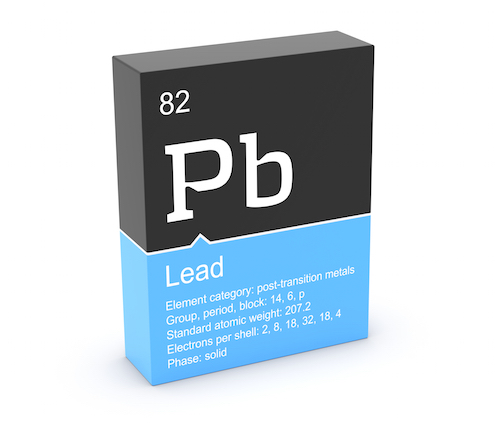Science marketing has evolved. As digital and mobile mediums become the norm, our capacity to directly engage a target audience has increased. But so have the expectations for what results our marketing should drive.
Nearly all facets of marketing can now fuel quantifiable lead generation. Did the material attract a prospective client? Did it coach them further along your sales funnel? For many numbers-driven executives, demand generation tactics that aren’t attracting or developing leads no longer belong in the marketing arsenal.
Below, we outline your best demand generation weapons to do just that. Learn why a healthy lead funnel is critical to your business, and how to keep it running at maximum capacity.
![]() Via social media. Forget about instant gratification, social media is hard work. But with great effort can come big results. It may take time to build a following on networking sites like Twitter, but your conversations can draw prospects in. Because leads often come via demand generation in the first place, creating the broader want for your products and services, social media is an avenue that can add a lot of value to your overall science brand.
Via social media. Forget about instant gratification, social media is hard work. But with great effort can come big results. It may take time to build a following on networking sites like Twitter, but your conversations can draw prospects in. Because leads often come via demand generation in the first place, creating the broader want for your products and services, social media is an avenue that can add a lot of value to your overall science brand.
Even tools intended for platform advertising, such as Twitter’s lead generation cards, can be used outside of paid campaigns, so you don’t necessarily need to invest to see value. The feature allows responsive followers to sign up for promotions or further information right within the tweet. There’s no need for the user to transfer to a company website, which makes converting a lead on social media an easier proposition.
How to maximize it: In essence, incorporate social media into your everyday business. Think creatively when it comes to channels and content. You (and your competitors) are probably on Twitter, but what about ResearchGate? Have your own scientists sign up to build organic thought leadership. Talk to people, exchange information and provide a sample of your company’s work or scientific presentation highlights. Finally, link to relevant materials on your website to start converting clicks into leads.
![]() Through person-to-person. In the age of marketing automation, mobile apps and PPC (pay-per-click), it’s easy to overlook the original lead generator: meeting people in person. Warm leads (those with the highest potential for sales) are best generated at trade shows, networking events, cocktail receptions and other in-person events. Even virtual symposia — a hybrid live-virtual connection — can drive new business relationships. Hosting focused webinars is another option for generating new contacts with a personal touch.
Through person-to-person. In the age of marketing automation, mobile apps and PPC (pay-per-click), it’s easy to overlook the original lead generator: meeting people in person. Warm leads (those with the highest potential for sales) are best generated at trade shows, networking events, cocktail receptions and other in-person events. Even virtual symposia — a hybrid live-virtual connection — can drive new business relationships. Hosting focused webinars is another option for generating new contacts with a personal touch.
How to maximize it: When meeting new prospects, work to gain a true appreciation of their needs — what problems can your products solve? Even if their conversion seems unlikely (a cold lead), take the time to solidify the relationship through networking sites such as LinkedIn. Cold leads have a reputation for unexpectedly heating up.
![]() Via content marketing. Publishing, posting or even creating more traditional direct mail pieces always involves a step into the unknown. Tracking returns in this space is inherently challenging. However, content marketing is undoubtedly an important tool, especially in the sciences where services and products require technical explanations. Contributed articles, opinion pieces, or Q&As with your scientists can be ideally placed to attract targeted audiences to your brand.
Via content marketing. Publishing, posting or even creating more traditional direct mail pieces always involves a step into the unknown. Tracking returns in this space is inherently challenging. However, content marketing is undoubtedly an important tool, especially in the sciences where services and products require technical explanations. Contributed articles, opinion pieces, or Q&As with your scientists can be ideally placed to attract targeted audiences to your brand.
How to maximize it: Not even the most in-depth pieces of content are exempt from marketing’s cardinal rule: always end with a call to action. What are you trying to elicit from the reader? The most standard lead generation tactic for content marketing materials includes “gating” content — swapping a reader’s contact information for your valuable paper or thought-piece. Additionally, encouraging feedback and comments with articles and blogs can spark worthwhile, fruitful discussions, introducing new names to your organization.
[bctt tweet=”Scientific companies excelling at #contentmarketing: @malvern_news and @generalelectric”]
![]() From paid exposure. If you’re focusing efforts into a condensed timeline, such as with a new product launch, paid online exposure can quickly generate a lot of noise. Start with banner ads on high visibility web pages or sponsorships at key industry conferences. Longer campaigns can be supplemented with PPC advertisements and SEO (search engine optimization) tactics. This is classic lead generation, a lure dropped straight in front of a fish.
From paid exposure. If you’re focusing efforts into a condensed timeline, such as with a new product launch, paid online exposure can quickly generate a lot of noise. Start with banner ads on high visibility web pages or sponsorships at key industry conferences. Longer campaigns can be supplemented with PPC advertisements and SEO (search engine optimization) tactics. This is classic lead generation, a lure dropped straight in front of a fish.
How to maximize it: Paid exposure can be considered a straightforward transaction, but that’s no excuse for sticking with the status quo. Use digital tracking tools to review and iterate your paid marketing placements regularly.
![]() Through outbound solicitation. Outbound solicitation is a natural downstream lead generation tool. Think phone calls, newsletters, even snail mail — all are a means to follow up and are therefore best employed when trying to draw in warm leads. Using them to target a broad group of cold prospects will do more harm than good, and, especially when it comes to email marketing, you risk being labeled as spam.
Through outbound solicitation. Outbound solicitation is a natural downstream lead generation tool. Think phone calls, newsletters, even snail mail — all are a means to follow up and are therefore best employed when trying to draw in warm leads. Using them to target a broad group of cold prospects will do more harm than good, and, especially when it comes to email marketing, you risk being labeled as spam.
How to maximize it: The more intimate the communication, the warmer your prospect must be. In other words: don’t cold-call a cold prospect — you’ll get an icy response. Instead, provide them with product information to review on their own time. Emails are less invasive and can be highly customized for the recipient. Mobile and social is another option for snack-sized brand snippets on the go.
Converting leads into customers
With these avenues in mind, it’s possible to cultivate a vibrant population of business leads. However, converting those leads into sales requires additional work. Consider these final points.
• Stay smooth. A smooth transition from demand generation to website conversion is key. Ensure that you’re creating cohesive marketing materials. If you have a PPC ad, make sure the copy is on brand and that the landing page is relevant. If your website is too broad, try employing product-specific landing pages or a microsite.
• Be speedy. If you’re investing in paid advertisements or gated content, make it count. A Harvard Business Review survey of 1.25 million sales leads found that potential customers approached within an hour of initial contact are seven times more likely to respond than those contacted 1 to 25 hours after, and 60 times more likely than those approached after one day.
• Set realistic data goals. Track, track, track! Did a lead originate from a newsletter, or a banner ad? To understand what’s driving your leads, your team needs to benchmark current sales, leads and website traffic numbers. This will allow you to both fine-tune your methods and accurately quantify returns later on. (If you’re just getting started with marketing automation and CRM integration, this post is a must-read.)
• Differentiate yourself at every point. Ensure the sales funnel leads directly to you. By failing to be specific in the ways that your company stands apart, lead generation may persuade potential customers to follow the crumbs to the product you’re pitching – but that may be a competitor’s.
Science marketing in 2015 demands lead generation; it’s a huge component of how we measure success. But while on the surface directing prospects seems like an easy ask, there’s a lot that goes into that forwarding click. Tactics will change, but in the meantime, use these tips to build compelling business leads, ensuring your sales funnel has a healthy population of future buyers.



















